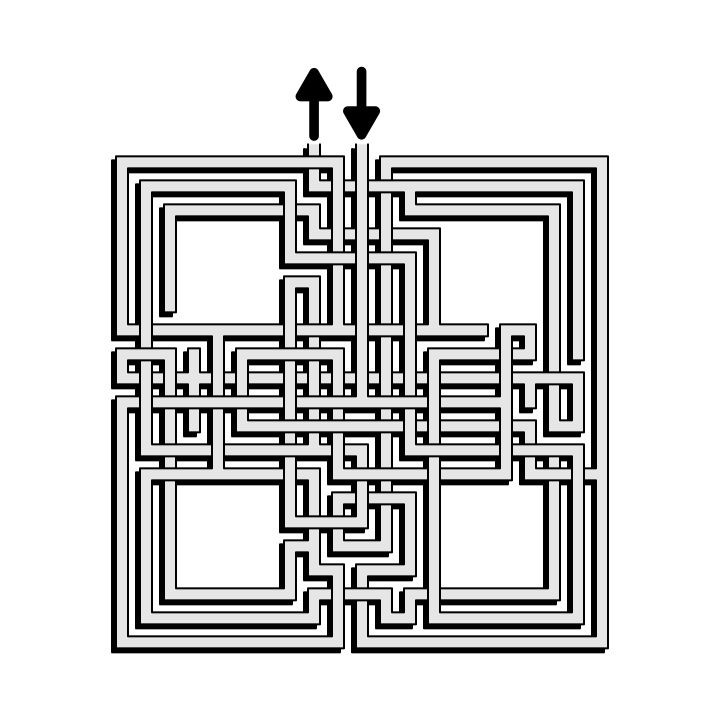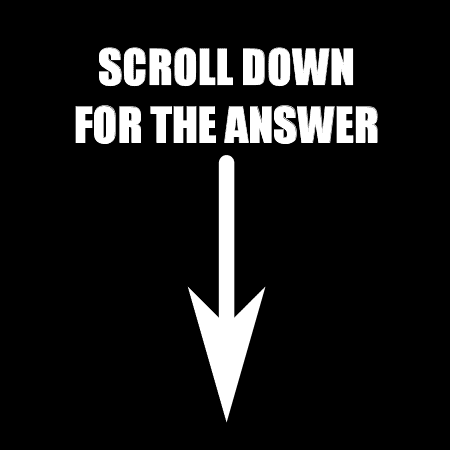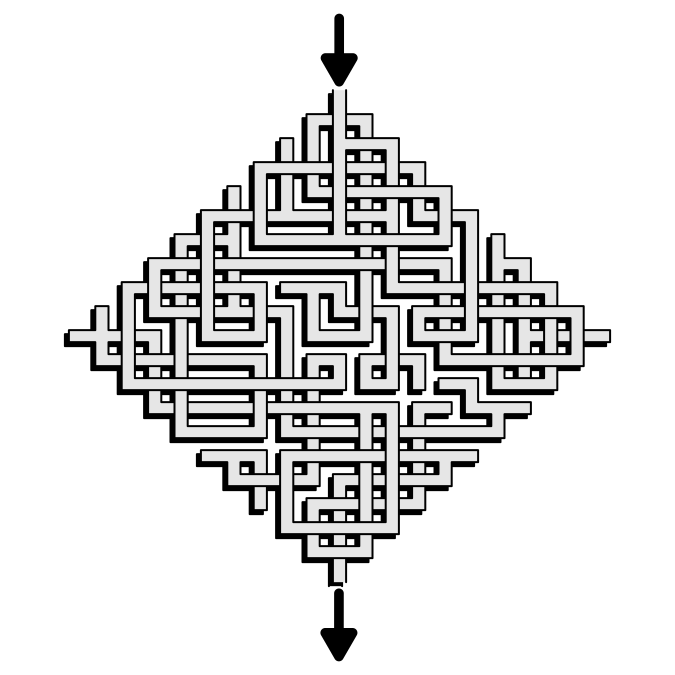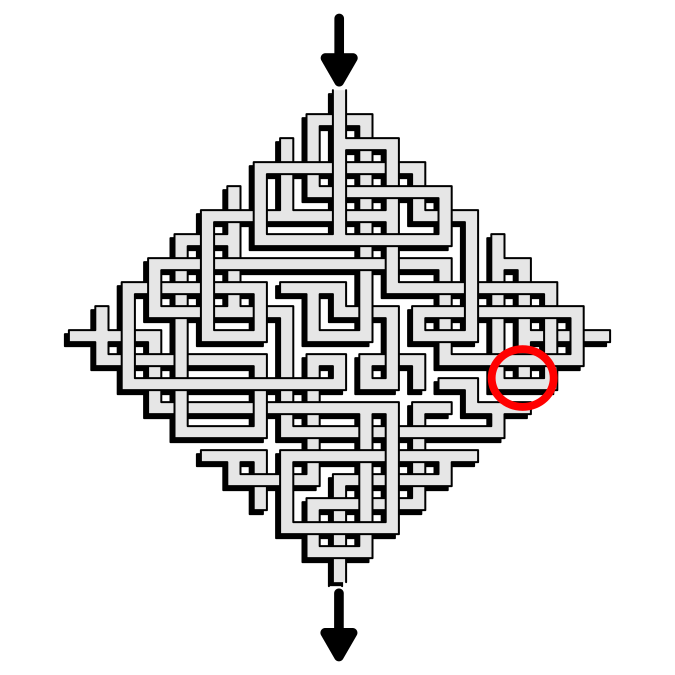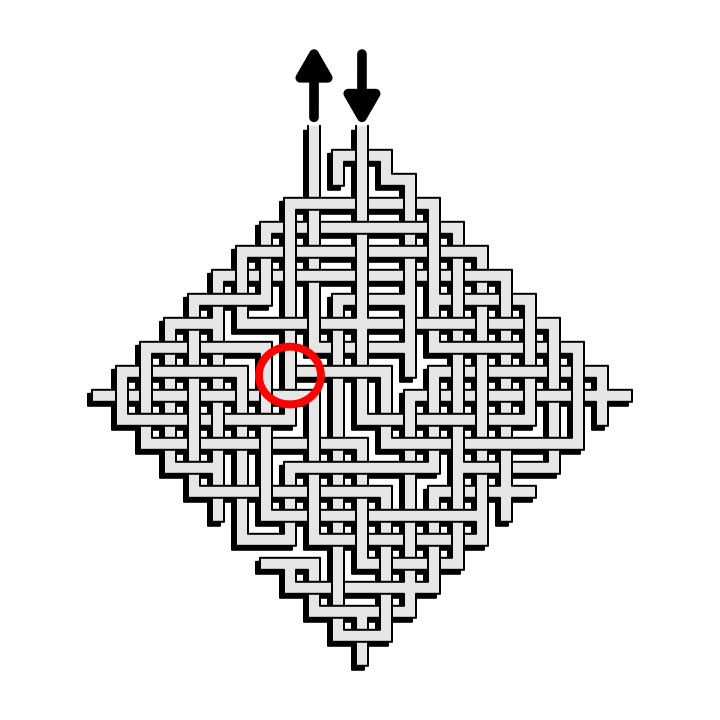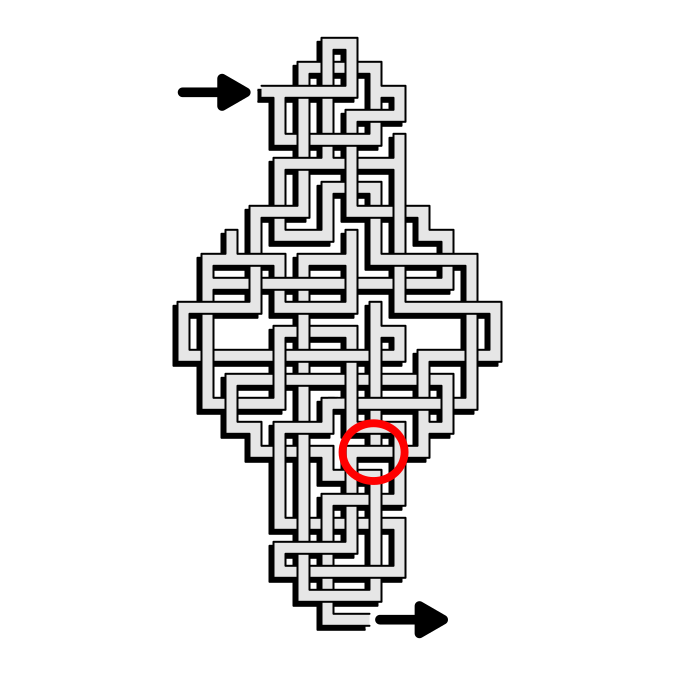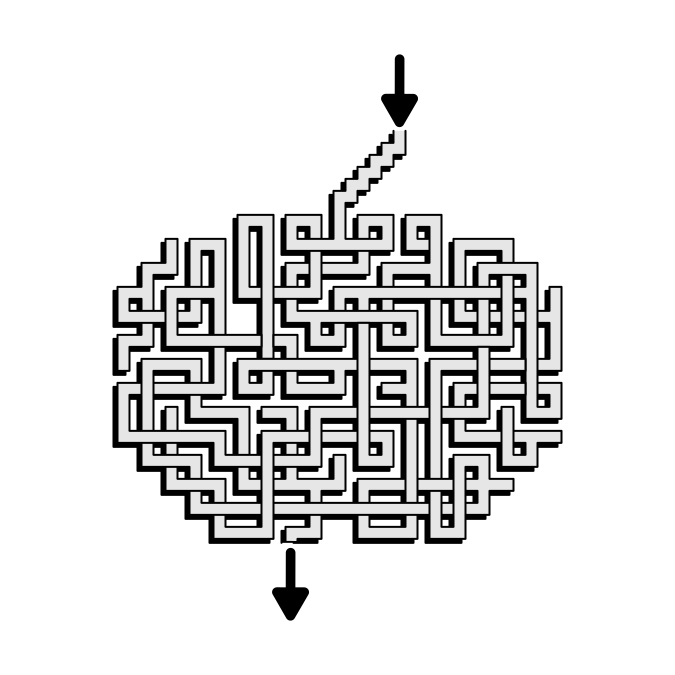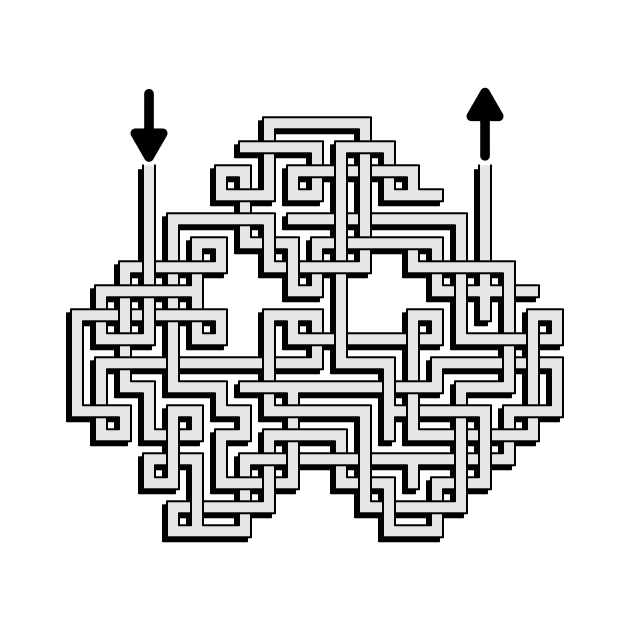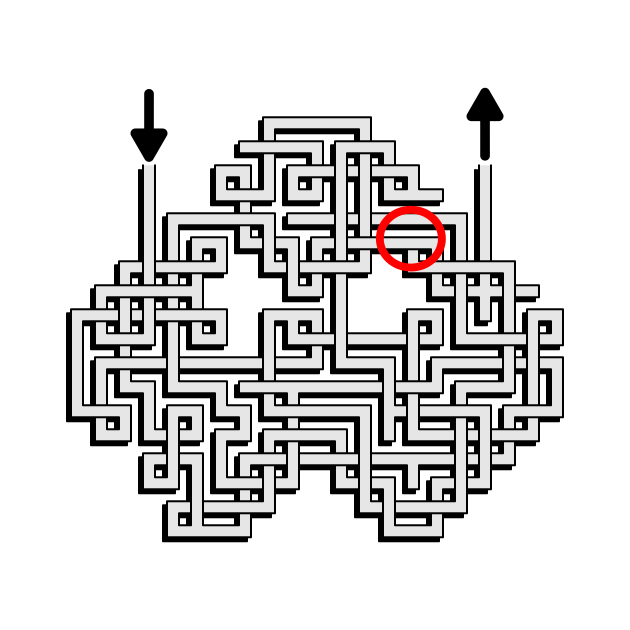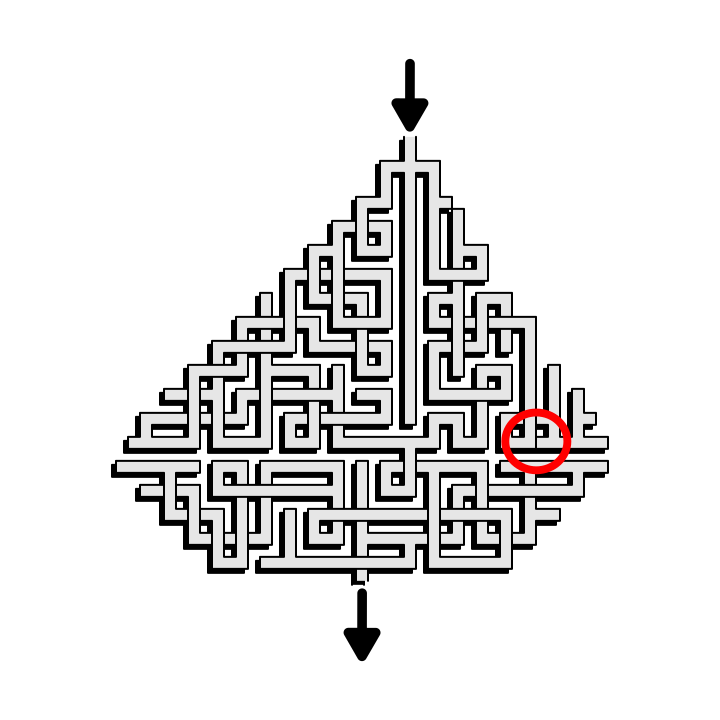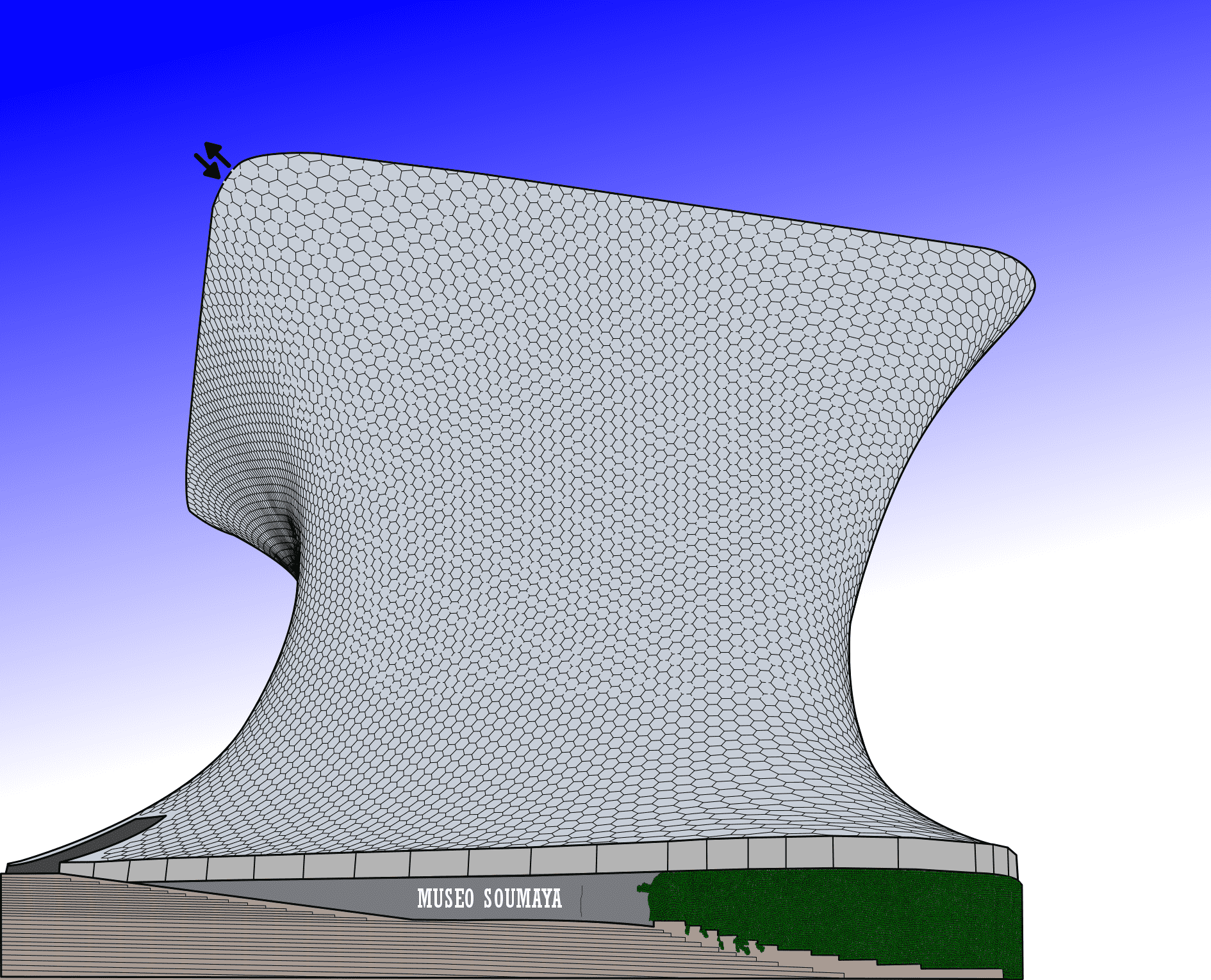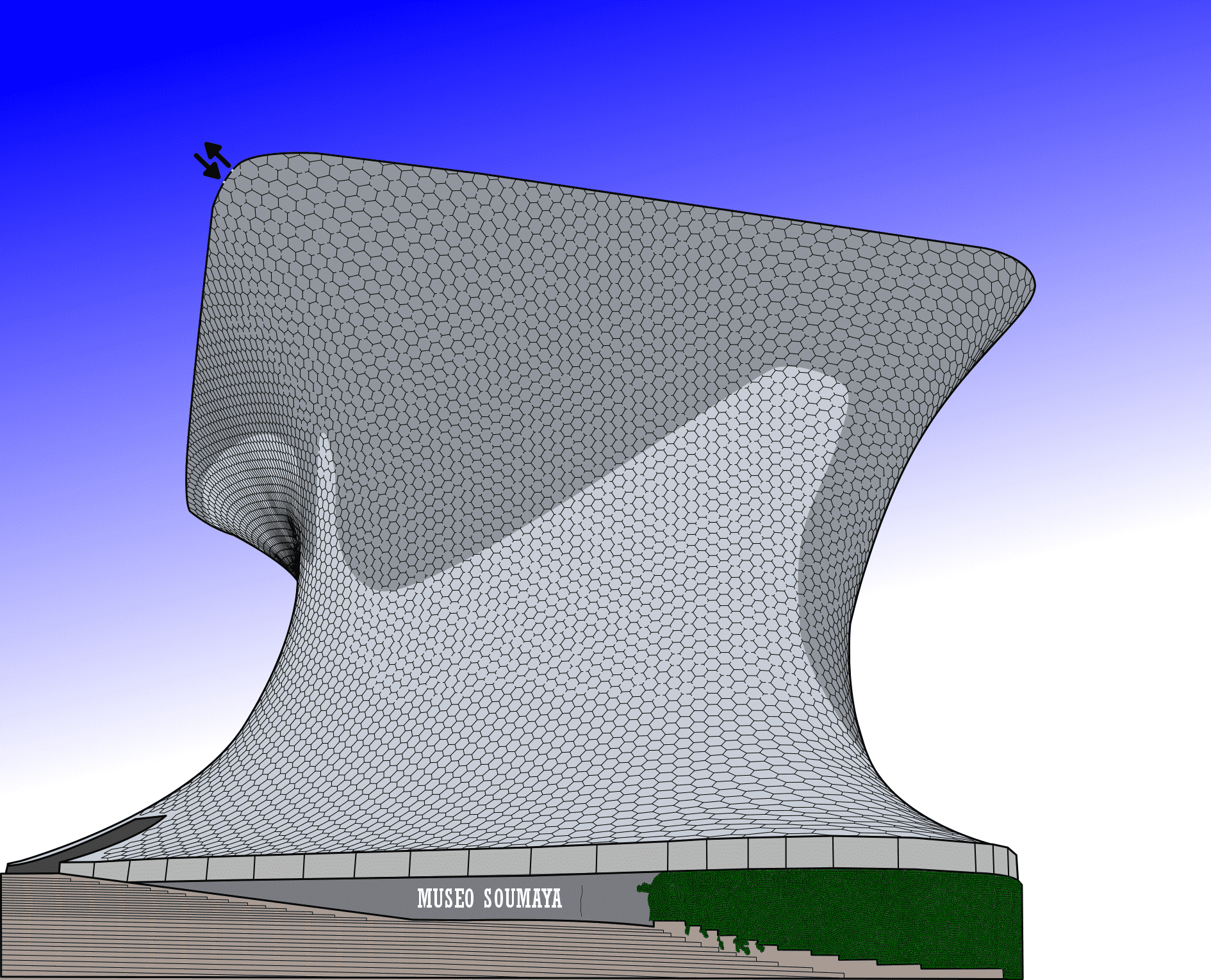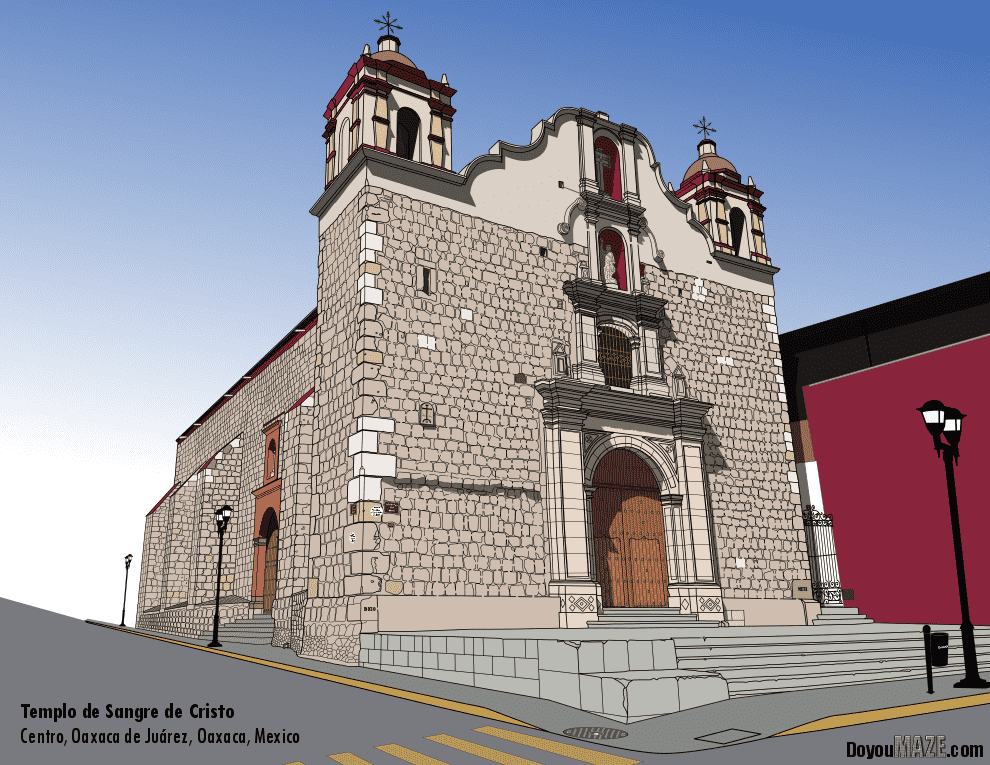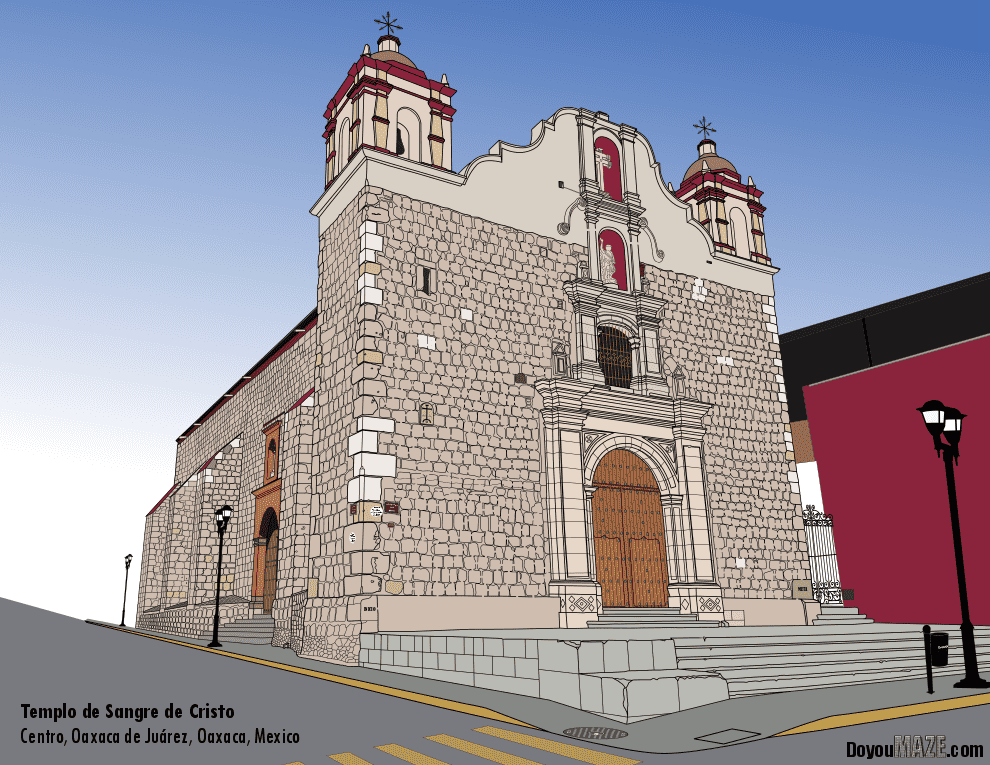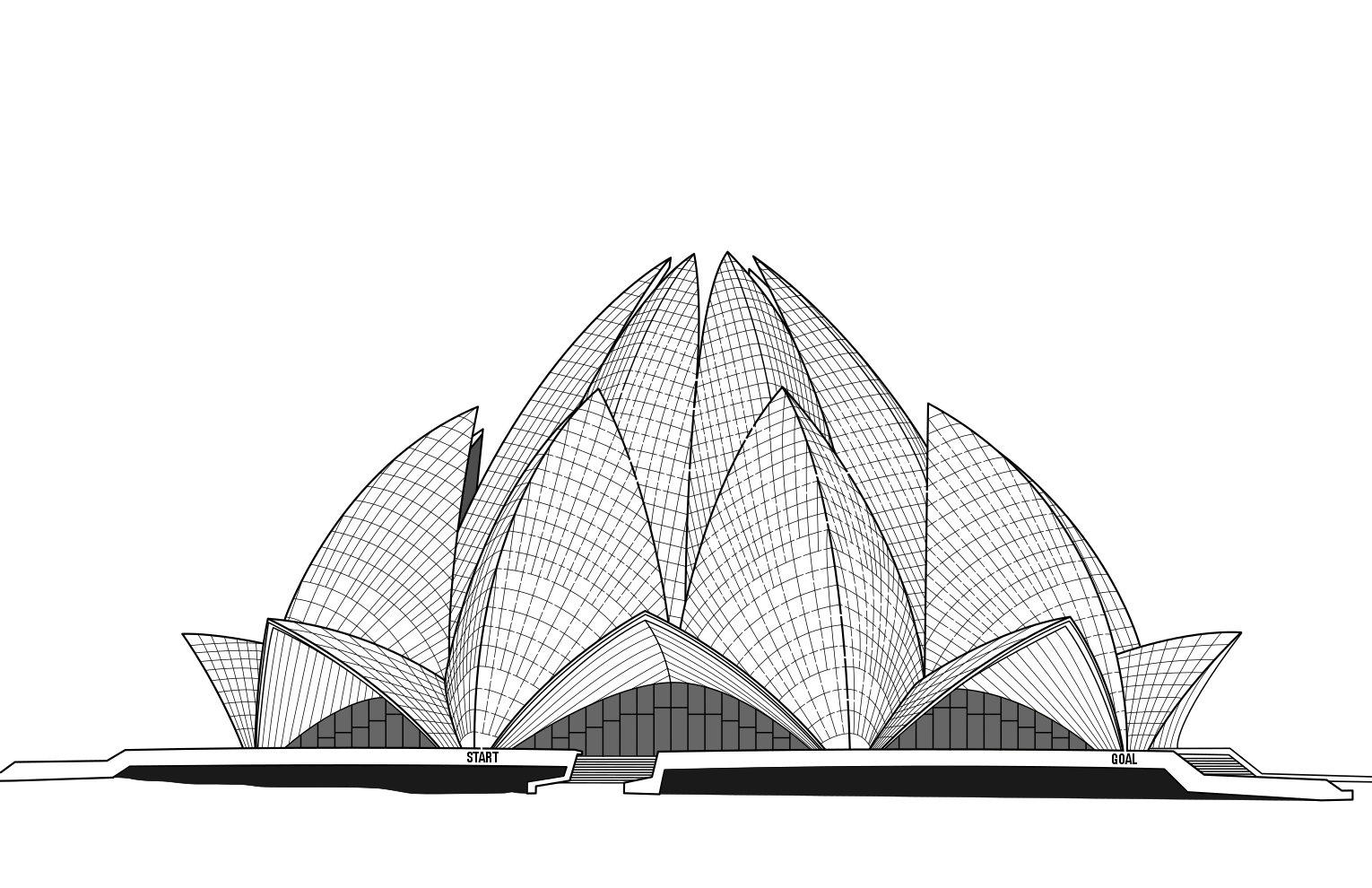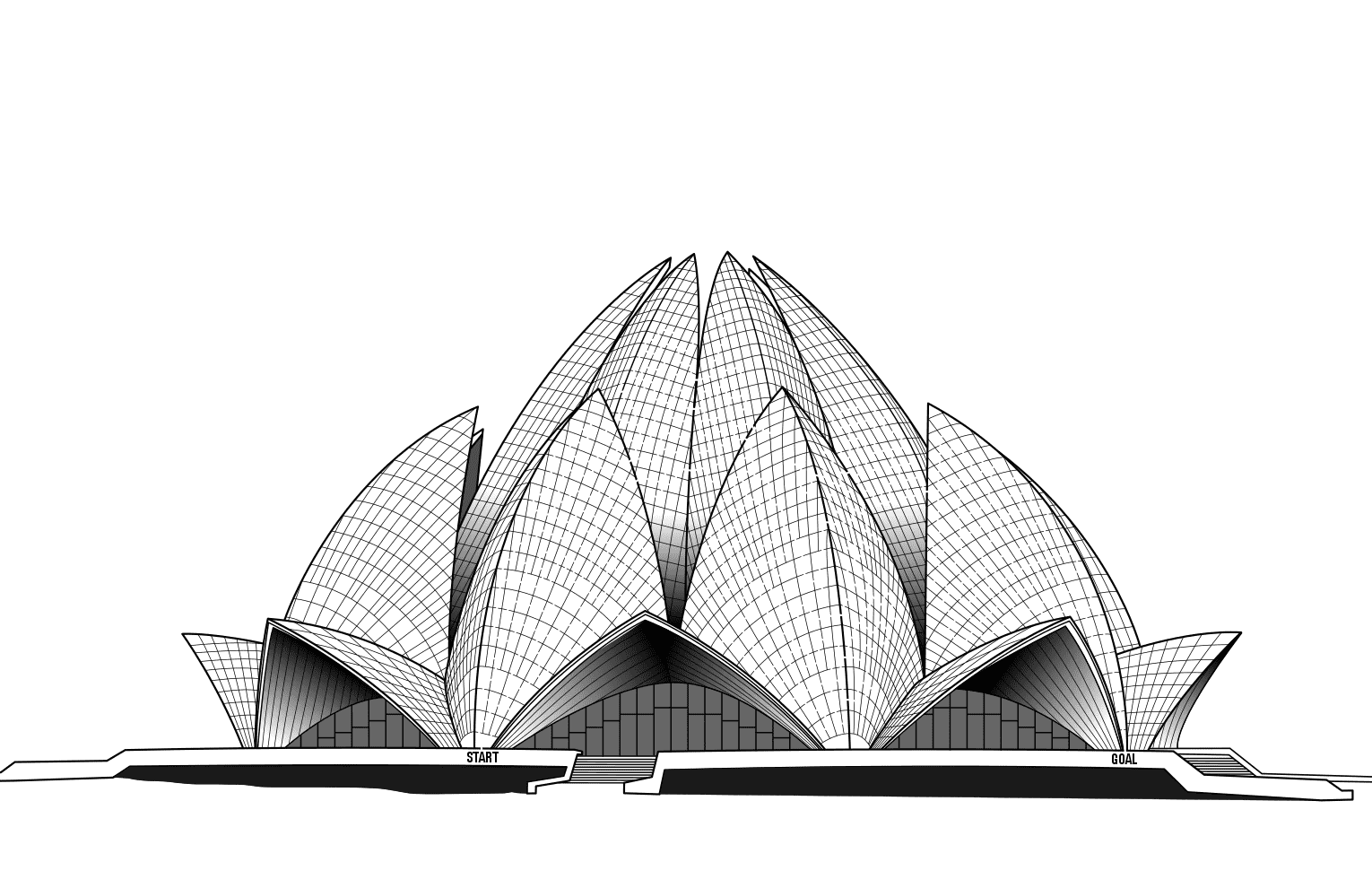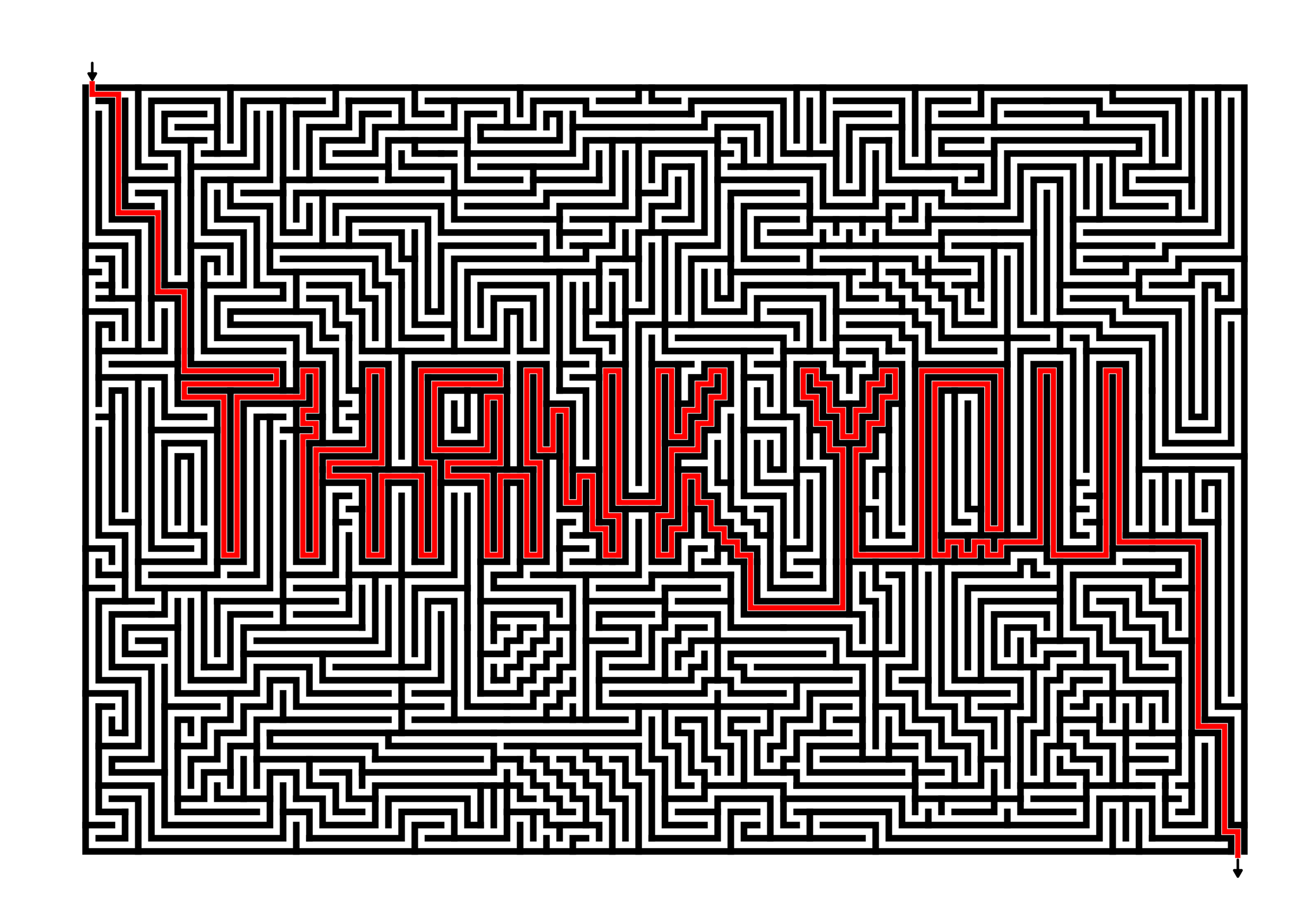I love making weaving mazes, but they present some challenges for the maze designer in addition to the solver. So much that I made a full post of my mistakes to test your observation skills. Turns out, there are now enough mistakes for a Part 2 !!! Not sure if that should get any exclamation points, but here we are.
If you want to try making this type of maze yourself you can read how I make a Weaving Maze, or the revised, improved weaving maze option. And if you think you would enjoy real, correct weaving mazes to solve like the ones below you can check out multiple books on Amazon. Almost all of these mistakes were part of the editing process and come from the books.
Let’s test your observation skills !
Here are the 2 main types of mistakes I made. A path that ends under another, or one that never comes out from under another.
Examples of mistakes you might find.
Let’s get started with our first maze which looks like a window. I like the design of the weaving maze but, it wouldn’t be here if there wasn’t a problem in the design. Can you find it ? When you are ready, scroll down to get the answer !
Observation Maze #1
Observation Maze #1 Answer.
For me, that was a tough one to find the mistake. If you found the design mistake, great job ! Let’s look at maze #2 and see how you do.
Maze #2 is the most popular shape I use. The shape is great for using for weaving mazes, but again I made a design mistake. Can you find it ? When you are ready, scroll down to get the answer !
Observation Maze #2
Observation Maze #2 Answer.
And now Maze #3. Can you find the design issue with this square wheel weaving maze ?
Observation Maze #3
Observation Maze #3 Answer.
Another path to nowhere…I found that one quickly. maybe because it was in a corner.
Maze #4 is a version of my favorite shape, just with a different start/goal configuration than normal. Can you find the error ? You know what to do.
Observation Maze #4
Observation Maze #4 Answer.
That was a tough one for me. I know the purpose of this post is to test your observation skills, but I just want to mention that this type of maze is really fun to solve (and design IMO). I made a poster size (11x17) weaving maze of a skull that people seem to like. I have a book of these on Amazon also. Try to solve a few of these - just don’t dead end at my mistakes !!
Back to the observation game. How about this fun shape?
Observation Maze #5
Observation Maze #5 Answer
I wish we were done, but I made a lot of mistakes, I’m just glad I caught them and could make them into something interesting (assuming so if you are still here!)
Let’s try this one, an apple weaving maze
Observation Maze #6
Observation Maze #6 Answer
Still more unfortunately.. Try this cloudlike shape. I am not sure what made me design a maze in this shape or maybe more accurately non-shape, but here we are.
Observation Maze #7
Observation Maze #7 Answer
And that does it. My mistakes became a game. I’d like to say this is the last time we do this, but I know it is not ! How did you do ? Would you be interested in more content like this ?
Did you try solving any mazes ? If you like this kind of maze check out these sections:
Weaving Mazes for Kids - Includes 10 mazes on the site with a download for a longer book of 23 mazes.



